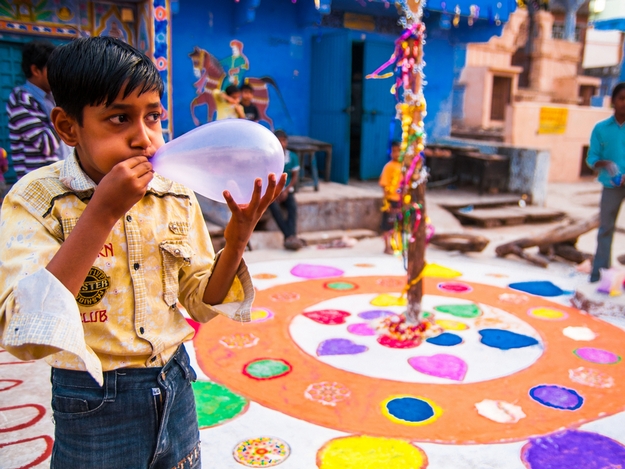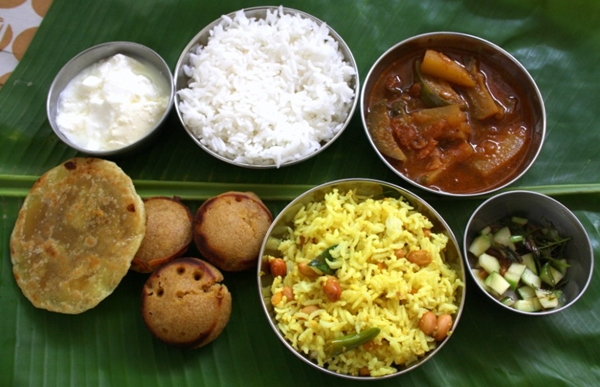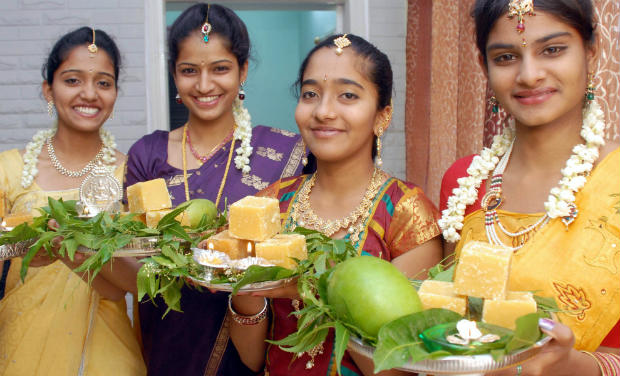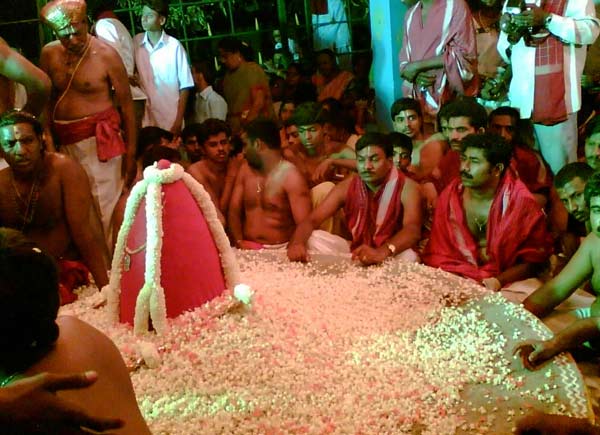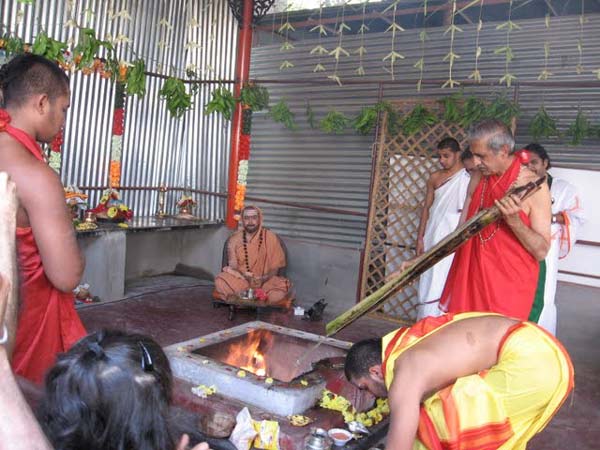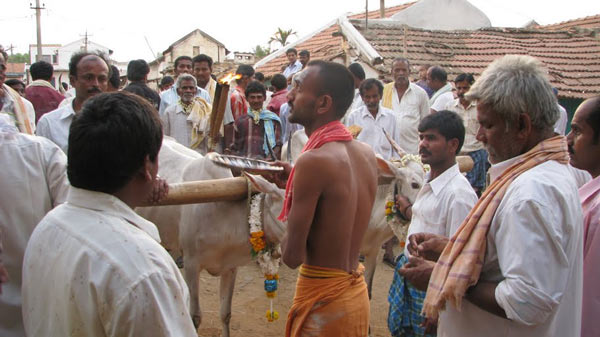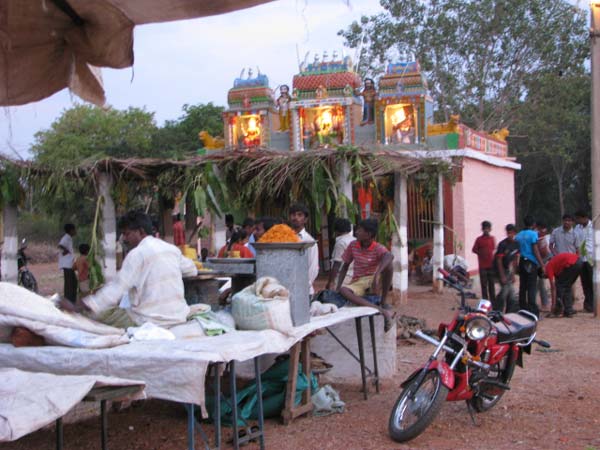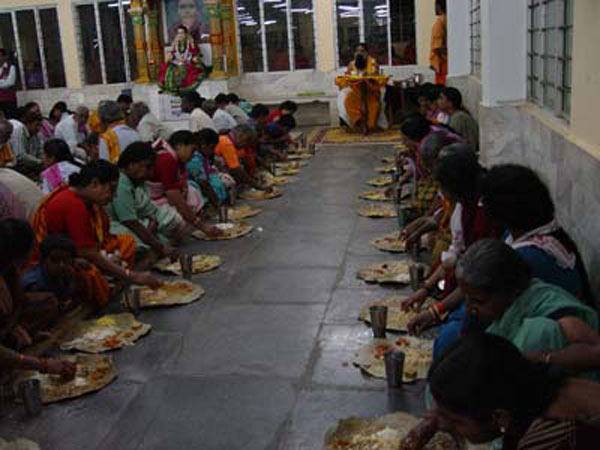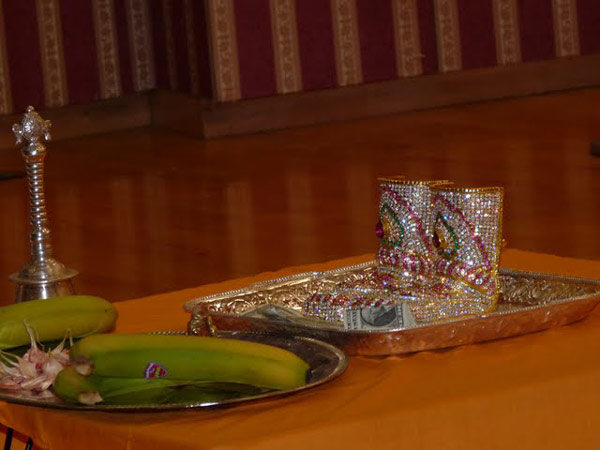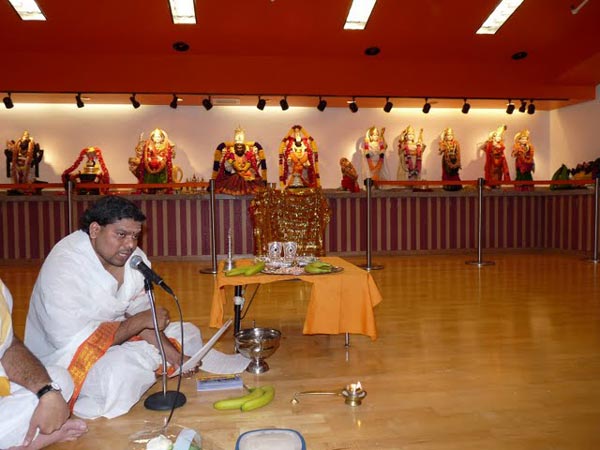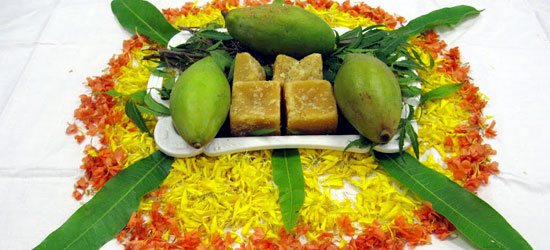Yugadi Festival
Yugadi- Karnataka |
About: |
| Ugadi is celebrated with festive fervor in Karnataka, Maharashtra and Andhra Pradesh. While it is called Ugadi in A.P. and Karnataka, in Maharashtra it is known as Gudipadawa.Ugadi marks the beginning of a new Hindu lunar calendar. It is a day when mantras are chanted and predictions made for the new year. The most important thing in the festival is Panchanga Shravanam - hearing of the Panchanga. The Panchanga Shravanam is done at the temples by the priests. Before reading out the annual forecasts as predicted in the Panchanga, the officiating priest reminds the participants of the creator - Brahma, and the span of creation of the universe.
The reading of the Panchanga then involves reading of other Tidhis (wealth and prosperity) during the year and ends with h a forecast for various sectors of the social life and the strengths and effects of various constellations and their transitions. The scriptures state that the benefits reaped by the listener as well as the reader, are equivalent to having a dip in the holy river Ganges. The individuals hearing the Panchanga should respectfully 'thank' the reader and offer him new clothes and seek his blessings. Preparations for the festival begin a week ahead. Houses are given a thorough wash. Shopping for new clothes and buying other items that go with the requirements of the festival are done with a lot of excitement. On Ugadi day, people wake up before the break of dawn and take a head bath. The bath is supposedly to be taken after massaging the entire body using sesame oil.The next step is offer prayers to Sun, before accepting Vepapoota Pachadi (Neem Flower Pickle) on an empty stomach. Entrance of the houses are decorated with fresh mango leaves. It is noteworthy that we use mango leaves and coconuts (as in a Kalasam, to initiate any pooja) only on auspicious occasions to propitiate gods. People also splash fresh cow dung water on the ground in front of their house and draw colourful floral designs. This is a common sight in every household. People perform the ritualistic worship to God invoking his blessings before they start off with the new year. |
Location info: |
| Address:Karnataka,India |
| District: Karnataka,India |
| Celebrate Time: March-April |
Climate/Weather: |
| During winter temperatures range from 32 degrees Celsius to below 20 degrees Celsius,Summer Average temperature is 34 degrees Celsius |
History: |
| People in Andhra Pradesh as well Karnataka believe that Lord Brahma created the universe on this auspicious occasion. Also Lord Vishnu is supposed to have incarnated in the form of Matsya. The successful warriors Marathas also returned from their successful wars on this day.1Hindus celebrate their New Year occasion on different days. It differs from region to region. People belonging to different regions celebrate the New Year in their own unique way. In Andhra Pradesh, Ugadi is celebrated in late March or during early April. In Maharashtra, the New Year known as Gudi Padwa is celebrated at the same time. In Karnataka also it is Ugadi.The New Year in both Andhra Pradesh and Karnataka falls in the month of Chaitra
|
Importance: |
| The Kannada and Telugu people celebrate the festival with great fanfare; gatherings of the extended family and a sumptuous feast are 'de rigueur'. The day, however, begins with ritual showers (oil bath) followed by prayers, and then the eating of a specific mixture.This mixture with all six tastes , called Ugadi Pachhadi in Telugu and Bevu-Bella in Kannada, symbolizes the fact that life is a mixture of different experiences (sadness, happiness, anger, fear, disgust, surprise) , which should be accepted together and with equanimity.Hollige/Bhakshalu-prepared on Ugadi in Karnataka
In Karnataka, a special dish called Bhakshalu or Bobbatlu (Puran Poli) are prepared on this occasion. It consists of a filling (Bengal gram and jaggery/sugar boiled and made in to a paste) stuffed in a flat roti like bread. It is usually eaten hot/cold with ghee or milk topping.Later, people traditionally gather to listen to the recitation of the religious almanac (Panchangam) of the coming year, and to the general forecast of the year to come. This is the Panchanga Sravanam, an informal social function where an elderly and respected person refers to the new almanac pertaining to the coming year and makes a general benediction to all present. The advent of television has changed this routine, especially in the cities. Nowadays, people turn on the TV to watch broadcasts of the recitation.Ugadi celebrations are marked by literary discussions, poetry recitations and recognition of authors of literary works through awards and cultural programs. Recitals of classical Karnatak music and dance are held in the evenings. |
Method of Celebration: |
The Kannada and Telugu people celebrate the festival with great fanfare; gatherings of the extended family and a sumptuous feast are 'de rigueur'. The day, however, begins with ritual showers (oil bath) followed by prayers, and then the eating of a specific mixture
|
Culture of Festivities: |
| In Karnataka , the celebration takes place by cleaning the house and buying new clothes. On this day the houses are decorated with mango leaves and rangoli designs are displayed in front of the house as well as inside the house. They pray for a prosperous year. They pay a visit to the temple and listen to the "Panchangasravanam" and the priest predicts events for the year. They also foretell their future. This is a day to take on new ventures. Prasad (religious food offering) is prepared made up of neem leaves and jaggery. The bitter and sweet taste of the Prasad means that life has sorrows and joys.
In Karnataka, Gudi Padwa celebrates the beginning of spring (March-April). After completing their abulitons in the morning, they put on new clothes and clean their houses and decorate them with rangoli designs. A silk banner is raised, which is worshipped and people exchange greetings and sweets. "Gudi" are hung on the windows to celebrate the bounties of Nature. A "gudi" happens to be a decorated pole which has a brass or silver vessel placed on top of it. It personifies victory and joy. The Marathas came back victorious from their war expeditions. The Maharashtrians prepare prasad (religious food offering) which is made of neem leaves and jaggery. It is bitter and sweet and implies that one must bear sorrow and joy in life. |

